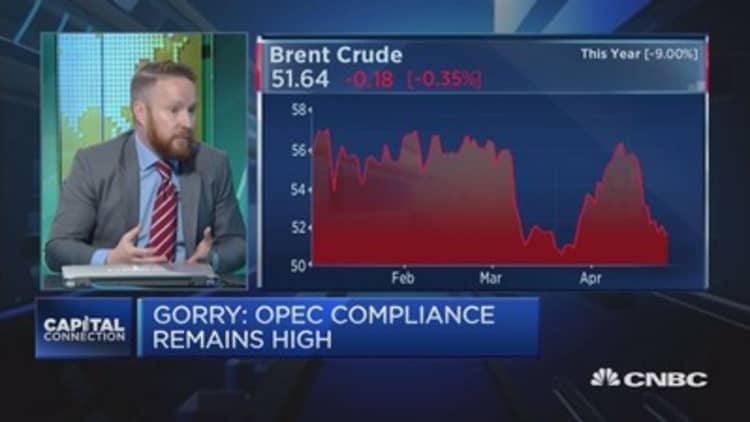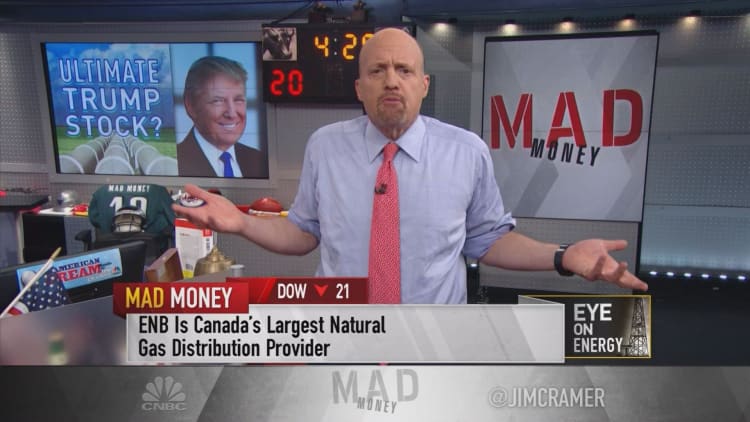
Crude prices fell more than 1 percent on Thursday as the restart of two key oilfields in Libya pumped more crude into an already bloated market.
U.S. gasoline futures also led the complex lower, falling to the lowest in at least eight years for this time of year after inventories rose by the most in nearly three months and demand remained weak.
Benchmark Brent crude was down 19 cents at $51.63 a barrel by 2:35 p.m ET (1735 GMT), nearly 9 percent below this month's peak.
U.S. light crude ended Thursday's trade 65 cents, or 1.3 percent, lower at $48.98, having fallen to a fresh four-week low.
Libya's 300,000 barrels per day (bpd) Sharara oilfield and 90,000 bpd El Feel oilfield have restarted after the end of protests that had blocked pipelines there, a Libyan oil source and local official said.

Libyan crude production stood at 491,000 bpd on Thursday, but the OPEC member was targeting 800,000 bpd soon and 1 million to 1.1 million bpd by August, the chairman of state oil firm NOC said on the sidelines of an industry event in Paris.
The news of the Libyan restarts helped push Brent below its 200-day moving average (MA) at $51.29 a barrel, a key technical support.
"The 200-day had been a bullseye and today we fell through it. So to me that could be a bullish omen," said Anthony Headrick, energy market analyst at CHS Hedging.
U.S. gasoline tumbled almost 3 percent to $1.5458 a gallon, the lowest since at least 2009 for this time of the year.
The slump in gasoline futures pushed the gasoline crack spread, an indication of refining profit margins, to an eight-year low after Wednesday's data showed record U.S. refinery throughputs last week spurred the biggest jump in gasoline inventories in three months, but that demand was down nearly two percent on the year.
Analysts warn that refiners risk worsening a fuel glut by running their facilities so hard amid tepid gasoline demand. If gas inventories remain elevated after the summer driving season, it could dent demand for feedstock crude oil.
"Gasoline is leading the way lower with ample stocks, lower demand compared to last year, and an increase in gas(oline) stocks on the east coast," said Headrick.

Amidst concerns about the persistent global oil glut, the Organization of the Petroleum Exporting Countries and Russia are in talks to extend a six-month deal to cut 1.8 million bpd into the second half of the year.
OPEC Secretary-General Mohammad Barkindo said the oil overhang was declining, but added that stocks remained high and needed to fall further in comments pointing to an extension in cuts.
Barkindo did not comment directly on whether the cut would be extended, but he said efforts were under way led by Saudi Energy Minister Khalid al-Falih, who is OPEC president in 2017, to get a consensus before ministers meet in Vienna on May 25.
The International Energy Agency said in its latest monthly market report that oil stocks in industrialized countries stood at around 3.06 billion barrels at the end of February, some 336 million barrels above the five-year average.
But inventories have remained stubbornly high, in part because of increased production from the United States. U.S. crude output is at its highest since August 2015 at 9.27 million bpd, according to government data.
— CNBC's Tom DiChristopher contributed to this report.

